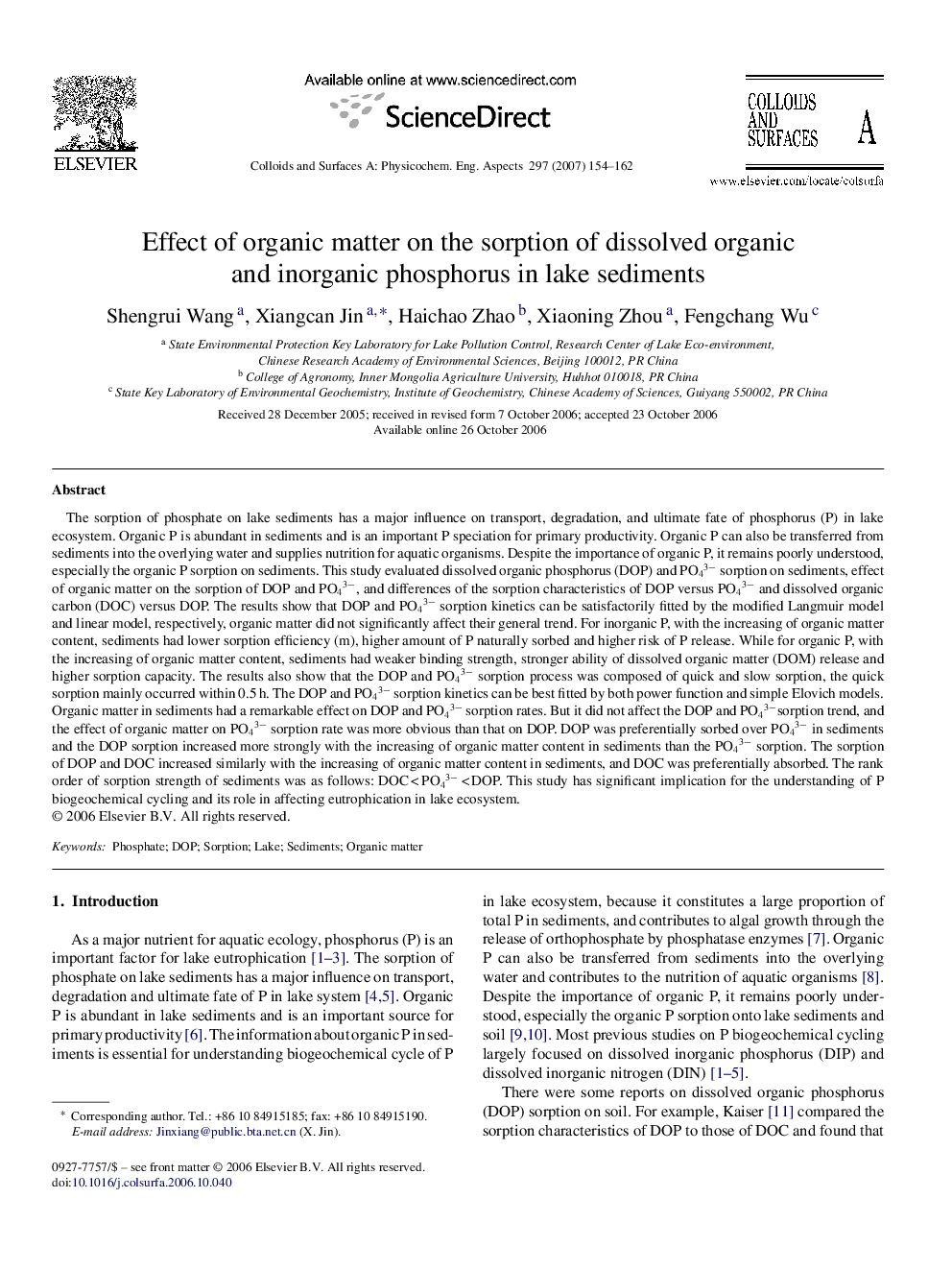| Article ID | Journal | Published Year | Pages | File Type |
|---|---|---|---|---|
| 597957 | Colloids and Surfaces A: Physicochemical and Engineering Aspects | 2007 | 9 Pages |
The sorption of phosphate on lake sediments has a major influence on transport, degradation, and ultimate fate of phosphorus (P) in lake ecosystem. Organic P is abundant in sediments and is an important P speciation for primary productivity. Organic P can also be transferred from sediments into the overlying water and supplies nutrition for aquatic organisms. Despite the importance of organic P, it remains poorly understood, especially the organic P sorption on sediments. This study evaluated dissolved organic phosphorus (DOP) and PO43− sorption on sediments, effect of organic matter on the sorption of DOP and PO43−, and differences of the sorption characteristics of DOP versus PO43− and dissolved organic carbon (DOC) versus DOP. The results show that DOP and PO43− sorption kinetics can be satisfactorily fitted by the modified Langmuir model and linear model, respectively, organic matter did not significantly affect their general trend. For inorganic P, with the increasing of organic matter content, sediments had lower sorption efficiency (m), higher amount of P naturally sorbed and higher risk of P release. While for organic P, with the increasing of organic matter content, sediments had weaker binding strength, stronger ability of dissolved organic matter (DOM) release and higher sorption capacity. The results also show that the DOP and PO43− sorption process was composed of quick and slow sorption, the quick sorption mainly occurred within 0.5 h. The DOP and PO43− sorption kinetics can be best fitted by both power function and simple Elovich models. Organic matter in sediments had a remarkable effect on DOP and PO43− sorption rates. But it did not affect the DOP and PO43−sorption trend, and the effect of organic matter on PO43− sorption rate was more obvious than that on DOP. DOP was preferentially sorbed over PO43− in sediments and the DOP sorption increased more strongly with the increasing of organic matter content in sediments than the PO43− sorption. The sorption of DOP and DOC increased similarly with the increasing of organic matter content in sediments, and DOC was preferentially absorbed. The rank order of sorption strength of sediments was as follows: DOC < PO43− < DOP. This study has significant implication for the understanding of P biogeochemical cycling and its role in affecting eutrophication in lake ecosystem.
